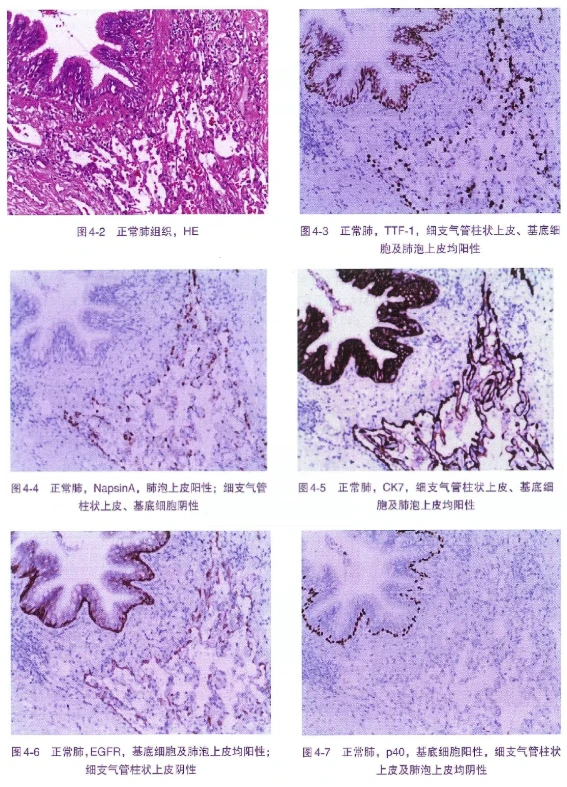Understanding Lung Tumor Markers: A Guide to Immunohistochemistry for Pathological Diagnosis
2025-07-24
By admin
Immunohistochemistry (IHC) is a vital tool for spotting lung tumors accurately. It shows the unique traits of healthy and cancerous lung tissues. For doctors, scientists, and pathology fans, learning about lung tissue markers is key to better diagnoses. This article dives into the traits of normal lung tissue, important lung tumor markers, and how Celnovte Biotech helps with cool tools like multiplex IHC kits and multiplex IHC stainers.
Traits of Normal Lung Tissue
Main Markers in Healthy Lung and Pleura
Knowing the features of healthy lung and pleura tissues helps diagnose tumors. The cells in the airways show specific signs that act as a guide for spotting changes. These signs include:
- CK7, CK-L, and EMA: Found in airway lining cells. They help identify these cells’ type.
- TTF-1 and NapsinA (-/+): Seen mostly in lung air sac cells. They sometimes appear in airway cells too.
- CK, CK7, EMA, and MUC5: Shown by goblet cells. These cells make mucus in the lungs.
- CK5/6, p63, p40, and EGFR: Present in basal cells. These cells help rebuild the airway lining.
- TTF-1, NapsinA, and CK7: Always found in air sac cells. They help spot tumors from these cells.
These markers create a clear picture of healthy lung tissue. Tumors often show similar traits, which helps doctors tell them apart.
Key Lung Tumor Markers
Top Markers for Lung Tumor Detection
Spotting lung tumors needs specific markers for different tumor types. Here’s a list of the best markers for common lung tumors:
|
Tumor Type |
Top IHC Markers |
|
Adenocarcinoma |
TTF-1, NapsinA, CK7 |
|
Squamous Cell Carcinoma |
p40, p63, CK5/6 |
|
Neuroendocrine Tumors |
Syn, CgA, INSM1, CD56, TTF-1, Ki-67 |
Markers for Adenocarcinoma
Adenocarcinomas are the most common lung cancer type. They show TTF-1, NapsinA, and CK7. These markers are great for confirming lung adenocarcinomas and ruling out tumors from other parts of the body.
Markers for Squamous Cell Carcinoma
Squamous cell carcinomas have p40, p63, and CK5/6. These help separate them from adenocarcinomas and other lung tumors. They’re especially useful when tissue samples are small and hard to read.
Markers for Neuroendocrine Tumors
Neuroendocrine tumors, like small cell lung cancer, use Syn, CgA, INSM1, CD56, TTF-1, and Ki-67. Here’s what they do:
- CgAis the most precise for spotting neuroendocrine traits.
- CD56is very sensitive but less precise.
- INSM1, a marker in cell nuclei, is both sensitive and precise. It’s a promising new tool for these tumors.
Recent studies say INSM1 could change how doctors test for neuroendocrine tumors. It might make testing easier by needing fewer markers.
How Multiplex IHC Helps Lung Tumor Diagnosis
Better Testing with Multiplex IHC Kits
Multiplex IHC kits from Celnovte Biotech let doctors check multiple markers on one tissue sample. This saves time and tissue. For lung tumors, these kits test markers like TTF-1, NapsinA, and p40 at once, making it easier to identify tumor types.
Faster Work with Multiplex IHC Stainers
Multiplex IHC stainers make staining automatic. They ensure steady, reliable results. These machines handle tricky staining tasks, perfect for busy labs. With Celnovte Biotech’s stainers, labs work faster and get clearer results, helping patients sooner.
About Celnovte Biotech
Celnovte Biotech is a top company in pathology diagnostics. It focuses on creating, building, and sharing advanced tools and reagents for diagnosis. Their main products, multiplex immunohistochemistry (mIHC) kits and multiplex IHC stainers, help labs analyze tissues clearly and quickly. Using smart technology, Celnovte Biotech aids doctors in finding key signs of diseases like lung cancer, improving patient care.
Frequently Asked Questions (FAQs)
Q1: What does immunohistochemistry (IHC) do for lung cancer?
A: IHC uses antibodies to find specific proteins in tissue samples. For lung cancer, it spots markers like TTF-1 and p40. This helps doctors know the tumor type and plan treatment.
Q2: How is multiplex IHC different from regular IHC?
A: Multiplex IHC checks many markers on one slide. Regular IHC checks one marker per slide. Multiplex saves time and tissue while giving a fuller picture of the tumor.
Q3: Why is TTF-1 a big deal for lung tumors?
A: TTF-1 helps spot lung adenocarcinomas and some neuroendocrine tumors. It tells doctors if a tumor started in the lung or came from elsewhere.
Q4: Why is INSM1 a good marker for neuroendocrine tumors?
A: INSM1 is a nuclear marker. It’s very sensitive and precise for neuroendocrine tumors. Studies show it’s better than older markers like CgA, making tests simpler.
Discover Better Diagnostic Tools
For doctors and researchers wanting better diagnostic tools, multiplex IHC kits and multiplex IHC stainers are game-changers. Celnovte Biotech offers these cutting-edge tools to boost lung tumor diagnosis. Check out Celnovte Biotech’s website to see how their solutions can improve your lab’s work and help patients faster.



